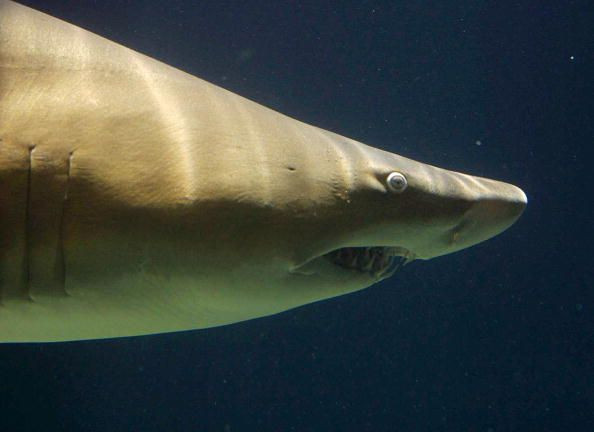WATCH: Great White Shark Gets Shockingly Close To Paddle Boarders Off California Coast

A great white shark got dangerously close to a pair of paddle boarders while they swam in the ocean. The predator surprised the two friends when it swam nearby last Saturday at Santa Claus Beach in Carpinteria.
Francesca Nash and her friend Rose Lebow paddled past the shore break when the shark arrived. Nash said she started recording as the shark moved between them.
Nash is a marine science student at Cal Poly San Luis Obispo in California and said she was "thrilled at the opportunity to witness a great white shark" so close. Nash claimed that the shark was no small fry, as it appeared to be between 10 to 12 feet in length.
"It was a bit shaking to see the shark so close to where all the children were and where surf camp was taking place, but it is clear that the sharks are not interested in the people and are minding their own business, eating the stingrays in the area," she told SF GATE Thursday.
READ: WATCH: Mysterious Deep-Sea Shark Captured On Camera By Scientists
Nash captured footage of the great white behemoth moving around her and Lebow for almost a minute until the shark jetted off. Nash claimed that the shark might have been in search of food. They were on a beach located near the Channel Islands, a national marine reservation with lots of prey for great white sharks to nibble on.
Researchers learned that Carpinteria is located near a nursery for great white sharks, making it a prime location for the predators to feast. Shark attacks and sightings have been on the up and up this year. The City of Santa Cruz initiated a four-day travel restriction July 11 that covered a three-mile radius after a great white confronted a kayaker.
READ: Huge Great White Shark Caught By Local Fisherman In Massachusetts
The increased shark sightings are happening partly because of increased environmental protections, according to Chris Lowe, a marine biologist professor at CSU Long Beach. Other marine wildlife such as otters and sea lions flourished, giving sharks a selection of prey to devour. This population boom may have resulted in a boost in the shark population, Lowe told SF Gate in May.
"The number of seals, sea lions and otters that have been observed with white shark bites has been steadily increasing since 2002," Lowe said.
Shark attacks troubled many swimmers for years and scientists apparently don't know why. The attacks may be attributed to self-defense, or sharks may just mistake humans for prey, according to Lowe.
"A shark may feel threatened by the presence of a human," said Lowe. "It may be sending signals, too, that the person can't see. When those warnings go unperceived, the shark could attack."
However, Lowe stated that the ocean is the shark’s natural habitat.
"We have unfettered access to the ocean," he said. "Humans have forgotten how to share habitats with wild animals, and they have to be re-educated."
Nash seemingly echoed Lowe’s point.
"I think it is important now, as their presence is increasing, that locals and visitors develop a healthy relationship with the ocean and sharks," Nash said. "I think it is experiences like this that help to demonstrate they are peaceful creatures of the ocean."
© Copyright IBTimes 2024. All rights reserved.





















